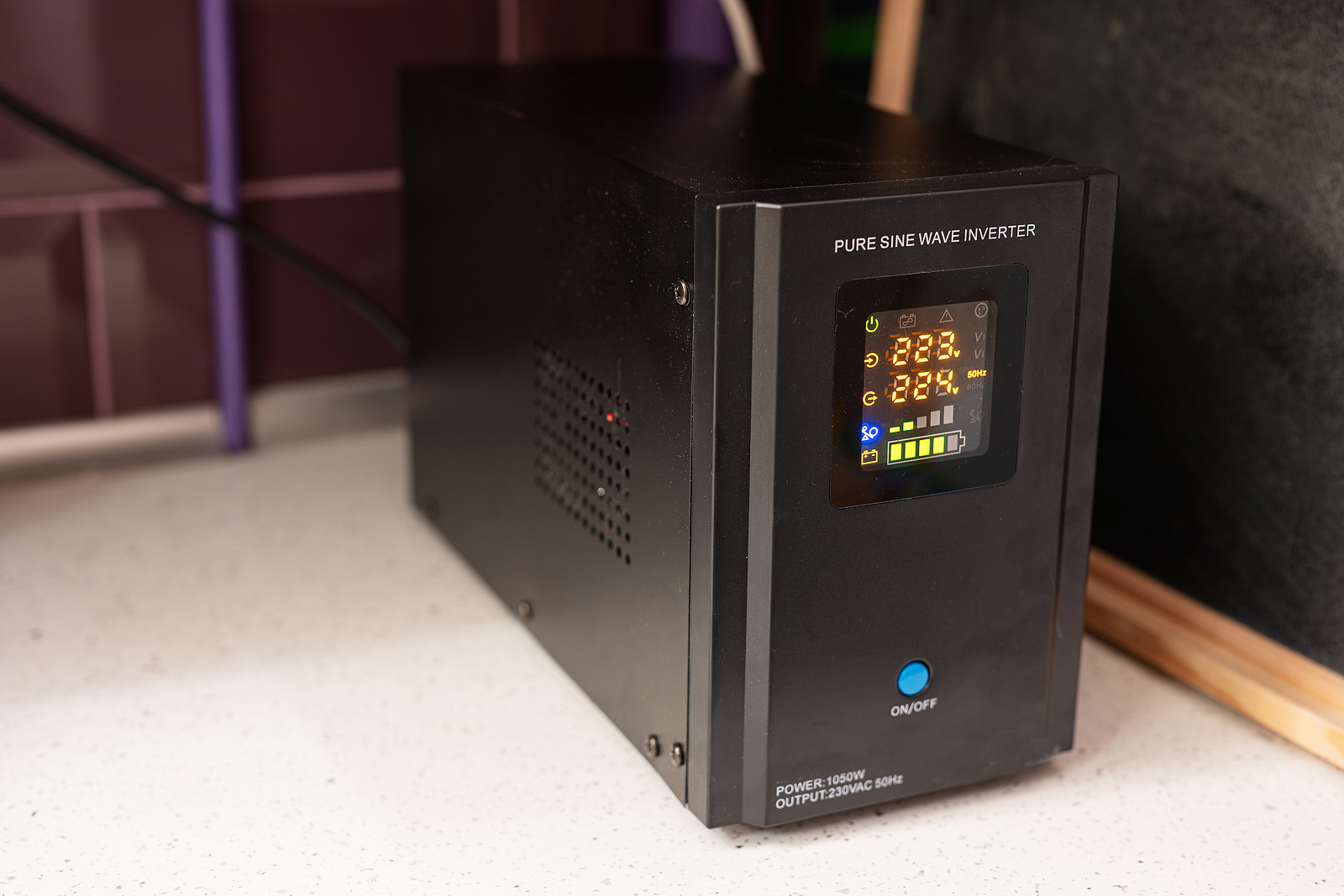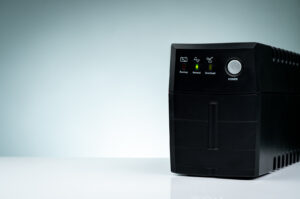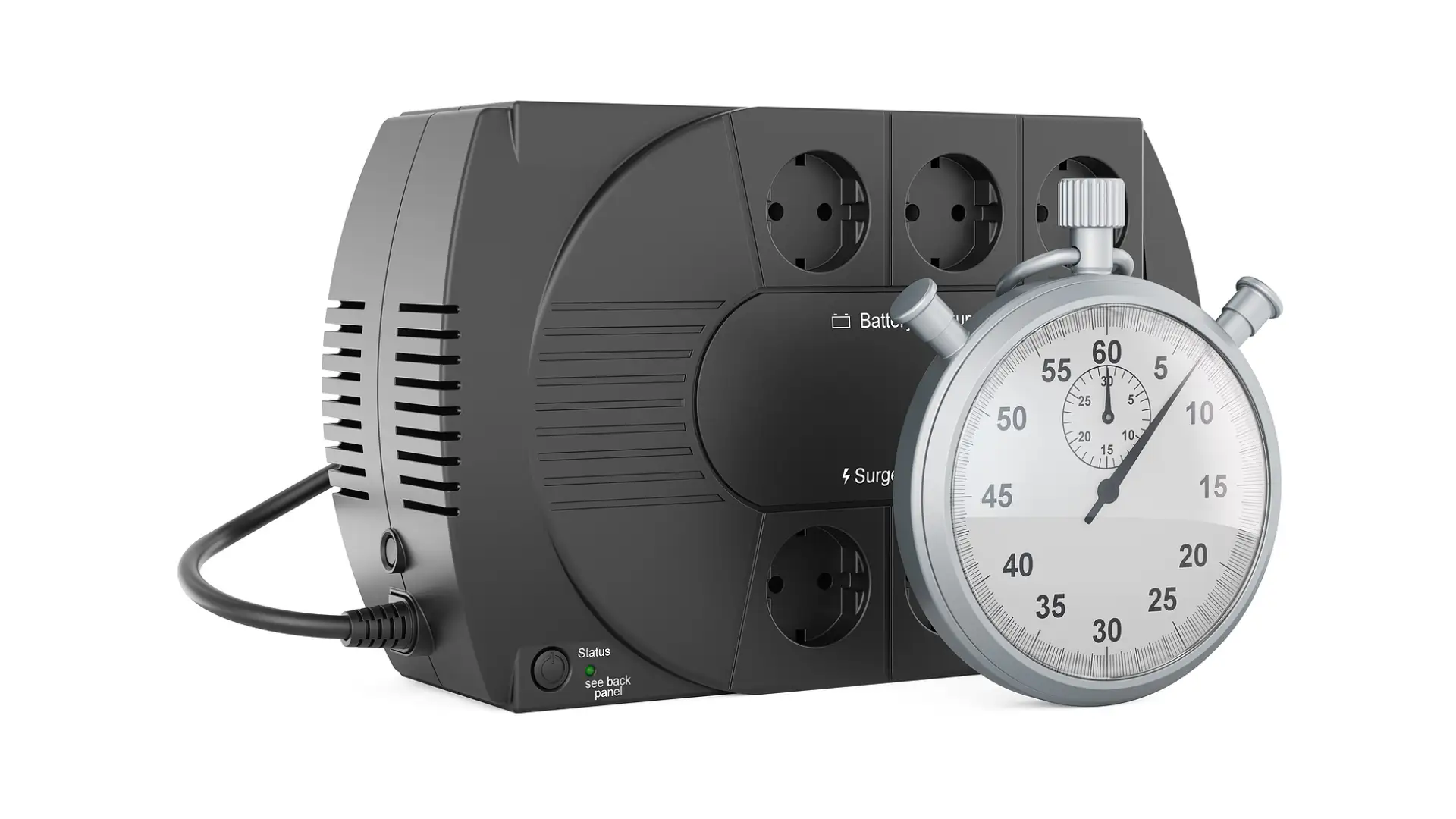
Sizing a UPS Battery Backup
As someone who relies heavily on electronic devices, I understand the importance of having a reliable Uninterruptible Power Supply (UPS) battery backup. Whether I'm working from my home office, managing my data center, or just want to safeguard my valuable equipment, choosing the right UPS and ensuring it has the correct battery capacity is paramount.
In this detailed guide, I'll dive into the world of UPS battery backups, sharing my insights and knowledge to help you make the best choice for your unique needs. We'll explore the intricacies of UPS selection and sizing, ensuring that you gain a clear understanding of how to protect your electronic devices effectively.
Understanding the Importance of UPS Battery Backups
In today's technology-driven world, the UPS (Uninterruptible Power Supply) battery backup has emerged as a crucial device for ensuring the uninterrupted operation of electronic equipment. Whether you're in a home office, a data center, or any environment reliant on electronic devices, understanding the importance of a UPS battery backup is essential.
At its core, a UPS battery backup is designed to provide emergency power during instances of power outages, voltage fluctuations, or electrical disturbances. This vital function serves multiple purposes, all geared towards safeguarding your electronic investments:
- Continuous Power Supply: The primary role of a UPS is to supply a stable and uninterrupted source of power to your connected devices. In the event of a power outage, it seamlessly switches to battery power, allowing your equipment to keep running. This ensures that critical tasks, such as saving work progress, backing up data, or gracefully shutting down systems, can be performed without interruption.
- Data Protection: Data loss can be catastrophic, both for individuals and businesses. UPS units play a pivotal role in data protection by giving you the time needed to save important files and gracefully shut down your systems during a power interruption. This prevents potential data corruption or loss that can occur when electronic devices are abruptly shut down.
- Surge Protection: Beyond power outages, UPS systems also provide surge protection. They act as a barrier against power surges, spikes, and voltage irregularities that can wreak havoc on sensitive electronic components. By regulating voltage levels and absorbing excess energy, a UPS safeguards your devices from potential damage.
- Customized Sizing: To ensure the optimal performance of your UPS, it's crucial to size it correctly based on your specific requirements. Factors such as the power consumption of your connected devices, the duration of backup power needed, and the criticality of your operations all play a role in determining the appropriate UPS capacity.

Calculating Your Load Requirements
Before proceeding with the selection of an Uninterruptible Power Supply (UPS), it is crucial to thoroughly assess and calculate your load requirements to ensure uninterrupted power supply. This comprehensive process involves identifying the specific devices you intend to connect to the UPS, evaluating their power consumption, and assessing their criticality within your operations.
Categorizing Critical and Non-Critical Devices
To begin, categorize your electronic devices into two main groups: critical and non-critical. Critical devices are those that must never experience power interruptions due to their vital roles, such as servers, network equipment, and medical apparatus. In contrast, non-critical devices, such as desktop computers or printers, can tolerate brief power interruptions without severe consequences.
Determining Wattage and VA Ratings
Every electronic device possesses both a wattage rating (measured in watts) and a Volt-Ampere (VA) rating. The VA rating is particularly important because it accounts for the power factor, which can vary among different devices. Typically, the VA rating is higher than the wattage rating. You can usually locate both of these ratings on the device's label or within its user manual.
Calculating Total Power Load
Once you have gathered the wattage and VA ratings for each device, proceed to calculate the total power load. Sum up the wattage and VA values of all critical devices separately. Non-critical devices can be grouped together, and their total load can be calculated independently.
Considering Future Expansion
It is essential to account for potential growth and expansion in your load requirements calculation. It is advisable to slightly oversize your UPS to accommodate any future additions to your electronic setup. This proactive approach ensures that your UPS remains effective as your needs evolve over time, safeguarding your critical equipment against power disruptions.
Selecting the Right UPS Capacity
Now that you have a clear understanding of your load requirements, it's time to choose the right UPS capacity. There are several factors to consider when selecting a UPS system that meets your needs.
Types of UPS Systems
There are three main types of UPS systems to choose from:
- Online UPS: Provides the highest level of protection as it continuously provides power from the battery, making it ideal for critical applications. They are highly efficient but tend to be more expensive.
- Line-Interactive UPS: Offers power conditioning and battery backup and is suitable for most office and home applications. It provides good protection against common power problems at a moderate cost.
- Standby UPS: Provides basic battery backup and surge protection but lacks the advanced features of online and line-interactive UPS units. They are suitable for non-critical devices.
UPS Capacity vs. Load
When it comes to Uninterruptible Power Supplies (UPS), understanding their capacity relative to the load they need to support is crucial. UPS capacity is usually specified in two ways: VA (Volt-Amperes) and watts. To ensure the reliable operation of your critical devices, it is imperative that your UPS capacity matches or exceeds the total load requirement of your equipment.
One essential point to consider is the difference between the VA and wattage ratings. The VA rating often appears higher than the wattage rating due to a factor known as the power factor. The power factor reflects the efficiency of the UPS in converting electrical energy from the AC source to DC and back to AC during a power outage. It's vital to ensure that your UPS can meet both the VA and wattage requirements of your critical devices, as neglecting either aspect could lead to inadequate protection or potential overload.
Therefore, when selecting a UPS for your specific needs, it's not enough to merely match the VA rating to your load. Instead, you should take into account the wattage requirements as well. This comprehensive approach ensures that your UPS can provide the necessary backup power while accommodating variations in power factor, ultimately safeguarding your equipment against unexpected power disruptions.
Navigating the VA vs. Watts Dilemma
When it comes to choosing the right Uninterruptible Power Supply (UPS), the VA (Volt-Amperes) vs. wattage consideration often presents a perplexing challenge. It's important to delve deeper into this dilemma to make informed decisions.
Firstly, it's essential to recognize that some electronic devices, particularly those equipped with power factor correction (PFC), have specific requirements when it comes to UPS capacity. PFC-enabled devices often demand a UPS with a higher VA rating to function optimally. This is because the VA rating accounts for the reactive power that devices with PFC may draw. Neglecting this aspect can lead to compatibility issues and potential operational problems.
To navigate this dilemma effectively, you should take several steps:
- Know Your Devices: Begin by thoroughly understanding the power requirements of the electronic devices you intend to connect to the UPS. Check their power factor and identify whether they have PFC features. Manufacturers' specifications are a valuable resource for this information.
- Consult the Experts: If you're unsure about the UPS capacity needed for your specific setup, don't hesitate to seek professional advice. IT specialists or UPS experts can provide insights tailored to your equipment and requirements, helping you make an informed decision.
- Consider Future Expansion: Think about potential future additions or changes to your equipment. Your UPS should have the capacity to accommodate any growth in your setup to ensure ongoing protection.
- Look Beyond the VA Rating: While the VA rating is essential, don't forget about the wattage aspect. Ensure that the UPS you choose can handle both the VA and wattage requirements, as this comprehensive approach guarantees compatibility and reliable performance.
Online vs. Line-Interactive vs. Standby UPS
Selecting the appropriate Uninterruptible Power Supply (UPS) type is a pivotal decision that hinges on your unique requirements and budget considerations. The three primary UPS categories—Online, Line-Interactive, and Standby—offer varying levels of protection and efficiency. To make an informed choice, let's delve deeper into the distinctions between these UPS types:
- Online UPS: Maximum ProtectionOnline UPS systems, also known as double-conversion UPS, are the gold standard for critical applications. These units continuously convert incoming AC power to DC and then back to AC, providing a consistent, clean power supply. This seamless power transition ensures maximum protection against voltage sags, surges, and other electrical disturbances. They are ideal for data centers, healthcare facilities, and other environments where uninterrupted power is non-negotiable.
- Line-Interactive UPS: Balance of Protection and Cost-EfficiencyLine-Interactive UPS systems offer an effective compromise between protection and cost. They incorporate automatic voltage regulation (AVR) to correct minor voltage fluctuations without switching to battery power. Line-Interactive UPS units are well-suited for small to medium-sized businesses, home offices, and individuals who require reliable power backup without breaking the bank.
- Standby UPS: Basic Backup for Home and Small BusinessStandby UPS, also known as offline UPS, are the most budget-friendly option. These systems remain in standby mode, only activating their battery when a power disturbance occurs. While they provide essential protection against power outages, their response time is slightly slower than that of online or line-interactive UPS units. Standby UPS is typically sufficient for home users, personal computers, and less critical business applications.
Understanding Battery Runtimes
Battery runtime is a pivotal consideration when choosing a UPS system, as it directly affects how long your essential equipment can continue functioning in the event of a power disruption. Delving into the intricacies of battery runtimes necessitates a closer examination of battery types and their capacities.
Battery Types: VRLA vs. Lithium-ion
The two predominant battery technologies employed in UPS systems are Valve-Regulated Lead-Acid (VRLA) batteries and Lithium-ion batteries, each offering distinct advantages and drawbacks. VRLA batteries are a popular choice due to their reliability and cost-effectiveness, but they come with a limited lifespan typically ranging from 3 to 5 years. In contrast, Lithium-ion batteries, albeit more expensive upfront, provide extended lifespans and quicker recharge times, making them an attractive option for applications where longevity and rapid recovery are paramount.
Battery Capacity and Runtime Calculations
To accurately ascertain the requisite battery capacity for your UPS, you must consider the power consumption of your critical devices, typically measured in watts, as well as the desired runtime during a power outage, which is measured in minutes. UPS manufacturers often offer online calculators that facilitate the estimation of battery runtime based on your specific load and the capacity of the UPS unit you intend to install. These calculators take into account factors such as the wattage requirements of your equipment and provide valuable insights to help you make an informed decision regarding your UPS configuration, ensuring uninterrupted power for your critical systems.

Considerations for Redundancy and Scalability
In the realm of mission-critical operations, the factors of redundancy and scalability take on paramount importance, and understanding these aspects in depth is crucial for maintaining uninterrupted functionality.
N+1 Redundancy: Ensuring Fault Tolerance
Redundancy is a fundamental principle when it comes to safeguarding the continuity of your operations. It entails the presence of backup systems that can seamlessly take over in the event of a primary UPS unit failure. N+1 redundancy, a notable configuration, goes a step further by having one additional UPS unit beyond what is strictly required to support your load. This strategic approach bolsters fault tolerance, substantially raising the level of reliability. In essence, it acts as an insurance policy against unexpected UPS failures, ensuring that critical systems remain operational without disruption.
Scalability: Meeting Future Needs
When selecting a UPS system, it's imperative to contemplate your organization's growth trajectory. Some UPS solutions offer a high degree of scalability, allowing you to easily expand your system's capacity as your power requirements evolve. This scalability can be achieved through the addition of external battery packs or supplementary UPS units. By embracing such flexibility, you not only save on immediate costs but also future-proof your power infrastructure. This forward-thinking approach ensures that your UPS can seamlessly adapt to the changing demands of your operations, whether they expand or evolve over time. Consequently, you can maintain uninterrupted power supply, even in the face of unforeseen growth or alterations in your power needs.
Proper Installation and Maintenance

Selecting and acquiring a Uninterruptible Power Supply (UPS) is just the first step in ensuring a reliable power backup system for your critical equipment. Proper installation and ongoing maintenance are essential to maximize the UPS's longevity and effectiveness.
Optimal Placement and Environmental Considerations
To begin, choose a suitable location for your UPS system. It should be installed in a cool, dry, and well-ventilated area to prevent overheating. Avoid exposing it to direct sunlight or excessive humidity, as these conditions can adversely affect its performance. Always adhere to the manufacturer's specific installation guidelines, as they may provide crucial insights into placement requirements.
Battery Maintenance Procedures
Routine battery maintenance is fundamental to preserving the UPS's functionality over time. This maintenance regimen typically includes tasks such as monitoring the battery status, cleaning the battery terminals, and replacing batteries as recommended by the manufacturer. Neglecting these maintenance tasks can lead to a shortened battery life and a compromised ability to provide backup power during outages.
Testing and Monitoring Protocols
Regularly subject your UPS to testing procedures that simulate power outages to ensure it operates as expected when needed most. Additionally, consider implementing monitoring software that enables you to remotely track the UPS's status and receive real-time alerts in case of any issues. This proactive approach helps you stay informed about the UPS's condition and allows you to address any concerns promptly, ensuring uninterrupted power protection for your critical equipment.
FAQs: UPS Battery Backup
Q: How long will a UPS battery backup last?
A: The duration a UPS (Uninterruptible Power Supply) battery backup will last depends on several factors, including the capacity of the UPS battery, the power load it's supporting, and the condition of the battery. Typically, UPS units are rated in terms of their capacity, often measured in Volt-Ampere (VA) or Watts (W). The larger the capacity, the longer it can provide power.
For example, a UPS with a 1000VA capacity might provide power for 15-30 minutes at a full load of 1000VA, but it could last longer if the load is lower. You can estimate the runtime by checking the UPS's specifications and considering your specific power requirements during an outage.
Q: What is a UPS backup battery?
A: A UPS backup battery, or Uninterruptible Power Supply backup battery, is a device that provides temporary electrical power to connected devices and equipment in the event of a power outage or disturbance. It acts as a buffer between the main power source (e.g., electrical outlet) and the devices it's protecting.
The UPS battery stores electrical energy when the main power supply is available and immediately supplies it when there is a power interruption. This helps prevent data loss, equipment damage, and downtime, making it valuable for critical applications like computers, servers, networking equipment, and sensitive electronics.
Q: What is the battery life for UPS?
A: The battery life of a UPS can vary widely depending on the quality of the UPS unit and the usage patterns. Generally, UPS batteries have a lifespan of 3 to 5 years, but this can be shorter if the UPS is subjected to frequent discharges or extreme temperature conditions.
It's important to regularly check and replace the UPS battery as needed to ensure it can provide reliable backup power when required. Most modern UPS units have user-replaceable batteries, making maintenance relatively straightforward. Manufacturers typically provide guidelines on battery replacement intervals and procedures in their user manuals.
Conclusion
In my own journey of relying heavily on electronic devices, I've come to understand the indispensable role of a well-chosen Uninterruptible Power Supply (UPS) battery backup. It's more than just a piece of equipment; it's peace of mind. A UPS system ensures uninterrupted power supply, safeguards against data loss and equipment damage, and allows me to focus on my work without the constant worry of unexpected disruptions.
Calculating load requirements, selecting the right UPS capacity, embracing scalability, and practicing proper maintenance are all crucial elements in this journey. These steps not only protect my electronic investments but also ensure that my power infrastructure evolves with my needs. In today's technology-driven world, a reliable UPS battery backup isn't just an option; it's a necessity for anyone who depends on electronic devices to stay connected and productive.
Sources
https://www.usaid.gov/energy/powering-health/system-components/uninterruptible-power-supplies
https://www.energy.gov/femp/purchasing-energy-efficient-uninterruptible-power-supplies
continue reading
Related Posts
Uninterruptable Power Supplies In today's world, where technology keeps us […]
Uninterruptible Power Supply For Laptop In today's fast-paced digital world, […]
Small Uninterruptible Power Supply In today's digital age, where connectivity […]



